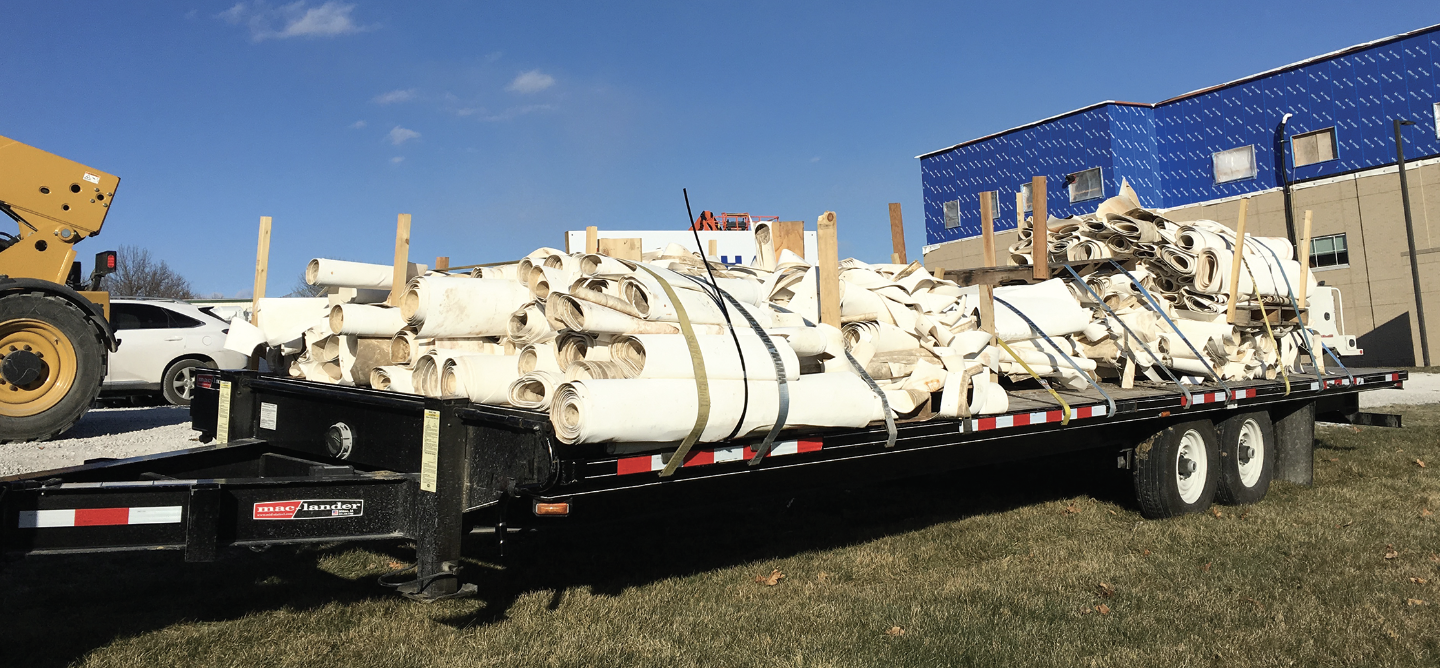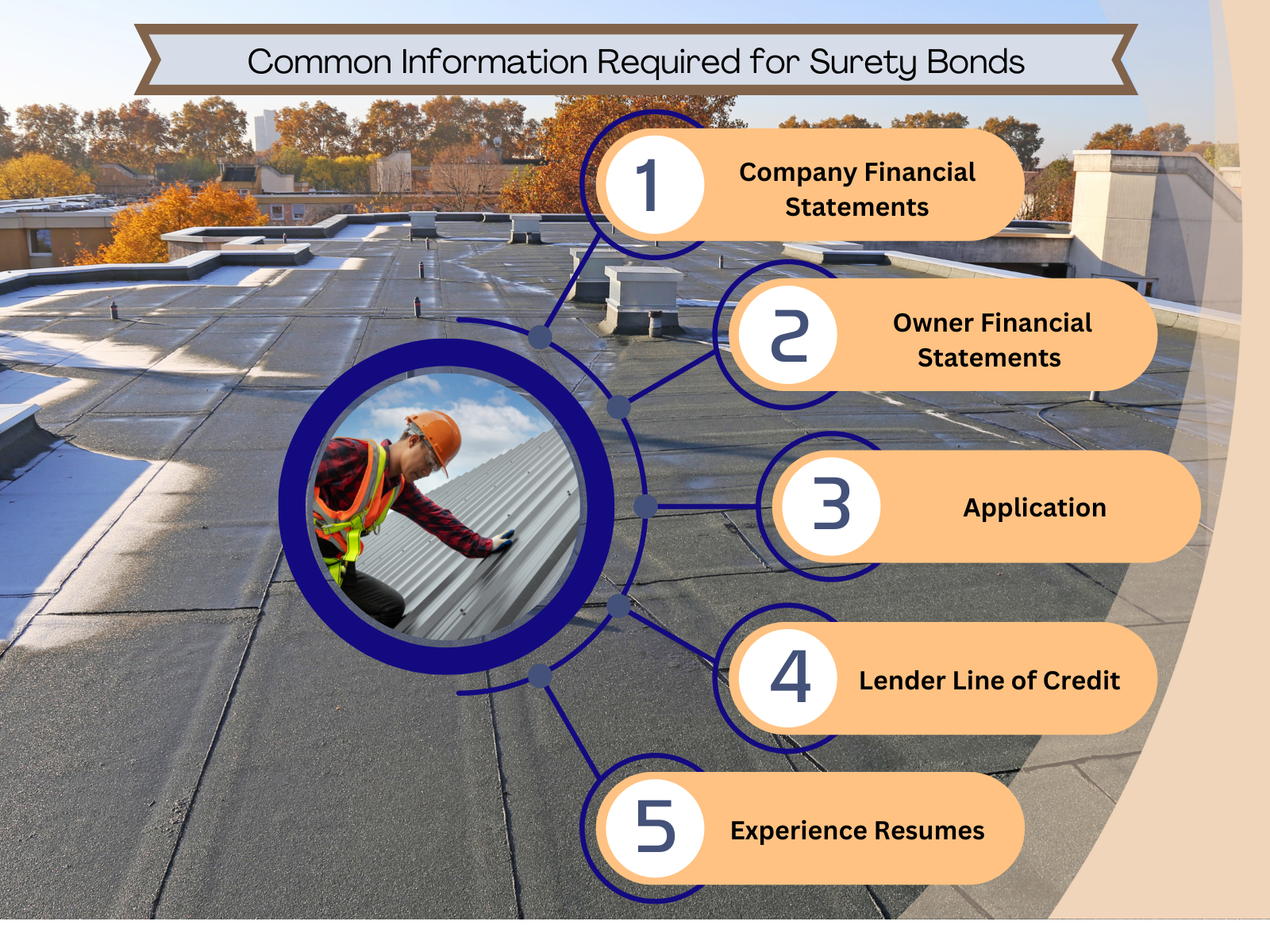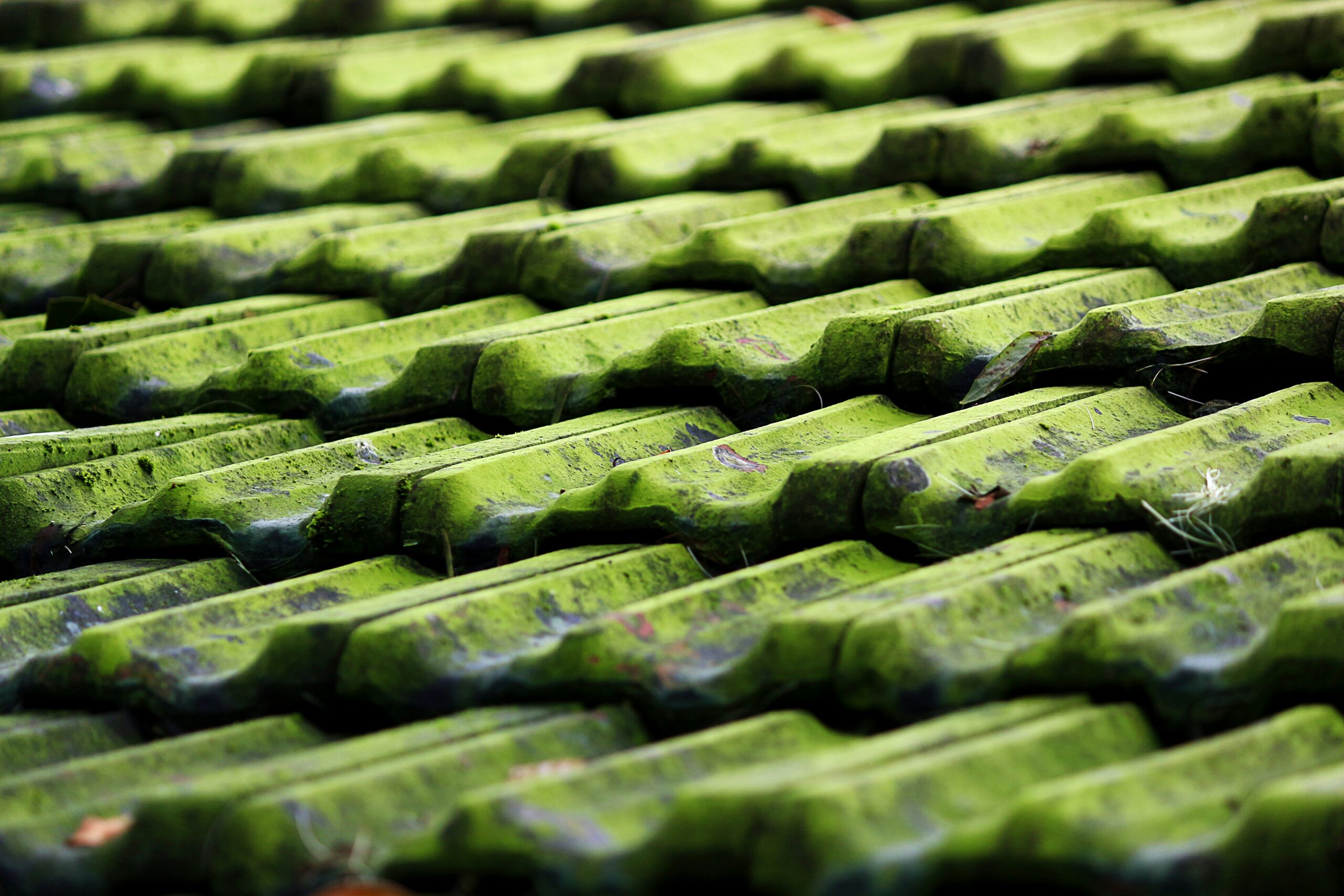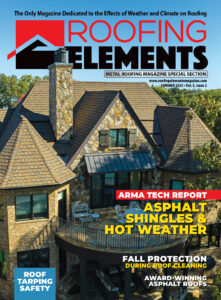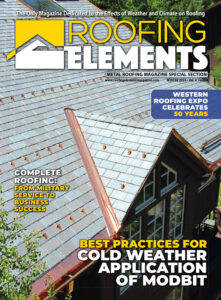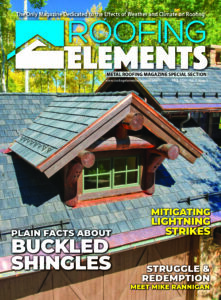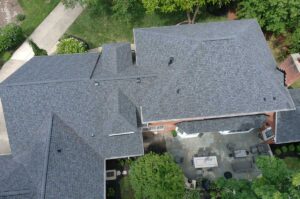By The Chemical Fabrics and Film Association
Introduction
For more than 50 years, durable, highly engineered, light- colored vinyl roofing membranes have cooled and protected buildings in climates around the world. Their long life cycle is a significant contributor to their excellent ratings to the American National Standard for assessing sustainability of single-ply roof membranes.i To date PVC materials are the only products to be rated gold or platinum to this standard. But it doesn’t stop there. Vinyl, or PVC, is the only commercial roofing material that is being recycled at the end of decades of service life into the feedstock to make new roofing membranes.
PVC has an inherent advantage over many other roofing materials when it comes to recycling. As a thermoplastic, it can readily be heated and reprocessed without loss of key physical properties. Thus it has long been an industry best practice to reintroduce production trimmings and scrap as a raw material into vinyl roofing membrane manufacturing processes. Some roofing manufacturers even collect and process their customers’ scrap as well as the general purpose scrap of other vinyl fabricators. In 2021, the member manufacturers of the Chemical Fabrics & Film Association (CFFA) Vinyl Roofing Division recycled a combined 20.5 million pounds of pre-consumer materials.
Skyrocketing raw material costs, higher landfill tipping fees, legislation to restrict disposal of construction materials, and an architectural community that demands the lightest environmental footprint that can be achieved, have led to the mainstreaming of post-consumer recycling and a vision of the day when specifiers will routinely call for post-consumer content in a roof membrane.
According to the U.S. Environmental Protection Agency, construction and demolition waste from buildings totals an estimated 332 billion pounds annually.ii Reroofing generates tremendous quantities of material that can and should be diverted from the waste stream. The vinyl roofing industry is committed to combining existing post-consumer recycling technologies with logistical expertise to limit its contribution to these numbers. In 2021, the member manufacturers of CFFA’s Vinyl Roofing Division recycled a combined 758 thousand pounds of membranes at the end of their service lives.
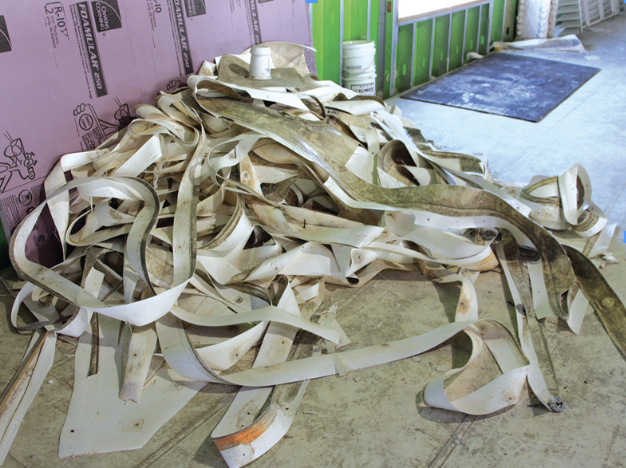
Post-Consumer Vinyl Roof Recycling – Where It All Began
In Europe, vinyl roofs have been in use for more than 50 years, and roofing manufacturers there have been recycling retired roofs into other useful products since 1994. That was the year a consortium of companies funded the construction and operation of a facility in Germany to reclaim vinyl membranes at the end of their service lives and return them to the original manufacturers.
Over the years, the material taken back has been used in a variety of applications, including as feedstock in the production of new roofing membranes. Typically incorporated into the back side of the sheet where potential color variations are not a factor, the recovered material can comprise up to 5 percent by weight of the finished product. Reports from the field indicate that, at 20+ years of age, the first membranes made with recycled post-consumer material are performing the same as membranes produced of virgin raw materials.
Today, ROOFCOLLECT, a European Single Ply Waterproofing Association (ESWA) program, coordinates the recovery and processing of post-consumer vinyl roofing membranes. In conjunction with the European Commission, ESWA sets and meets annual targets for post- consumer roof recycling. In 2015, ROOFCOLLECT recycled 7 million pounds of roofing and waterproofing membranes, continuing its commitment to recycle at least 50 percent of collectable, available used roofing membranes.iii
In North America, post-consumer recycling of vinyl roof membranes in the U.S. began in 1999. Working in tandem with a vinyl membrane manufacturer, a Massachusetts recycling company produced a highway cold patching material made from old vinyl roofing membranes and other recovered plastics. As state-of-the-art grinding equipment evolved so that it could separate polyester scrim reinforcement and felt backing from the vinyl polymer, retired roofing membrane became feedstock for new products such as roofing walkway pads, commercial-grade flooring and concrete expansion joints. While the production of walkway pads might consume a few hundred thousand pounds of product a year for any one manufacturer, now more than a million pounds are being converted into new membrane annually as production lines are designed to blend granulated vinyl material with virgin feedstock.
Recycling Projects Shed Light on Opportunities and Challenges
Total net costs of post-consumer recycling depend on total roofing square footage, the distance the old roof must be shipped to be processed and avoided landfill tipping fees. Yet, the savings in disposal costs and the value of the full range of salvaged materials have generally exceeded the cost of the additional labor, shipping and grinding fees involved to remove and reuse end-of-life vinyl roofing material. Thus, it is possible to actively consider making the commitment to incorporate a recycling strategy into a roof replacement project.
An example of the recycling path being less expensive to the project occurred with Pella Regional Health Center’s (Pella, Iowa) expansion for a new obstetrics unit. The project’s building team included a roofing membrane manufacturer with a take-back program in which the roofing contractor participated. The used membrane was cut up into 5-foot strips onsite, then rolled and bundled with a portable bander. Full boxes of aged roofing membrane traveled by flatbed trailer to be unloaded at the contractor’s facility before being returned to the manufacturer. Taking advantage of this resource, 7,200 pounds of membrane at the end of its useful life was diverted from the landfill. In addition, approximately 120,000 board-feet of expanded polystyrene insulation was removed and taken back to the original insulation manufacturer, and more than 1,000 pounds of metal fastener components were also recycled.
With the University of Iowa’s (Iowa City, Iowa) Carver-Hawkeye Arena reroofing project, the aged roof was rolled up and sent to a Cedar Rapids recycler to size reduce the material volume via grinding. This helped minimize the volume of material to be shipped back to the membrane manufacturer and the associated freight charges. University officials found this approach a cost- effective choice compared to tipping fees at a landfill, and more environmentally responsible.
All involved parties were also motivated to recycle as much of the complete assembly as practical, including the gravel ballast, the metal flashings and the extruded polystyrene insulation. In the end, 95 percent of the existing materials of the assembly, by weight, were recycled, and the membrane was returned to the manufacturer for use in other membrane products. The contractor estimated a savings of 25 percent versus the traditional disposal costs, even with the additional handling required.
In 2008, a Michigan contractor completed what is believed to be the biggest roof recycling project ever carried out in North America. A 250,000 square foot automotive facility was re-roofed in Lansing, Michigan. The existing roof, which consisted of two complete roof assemblies (the roof was re-covered once), was removed to the steel deck, and a new mechanically attached vinyl membrane assembly was installed in its place. Both layers of the previous vinyl membrane installations were recycled, diverting close to half a million square feet of material from the landfill.
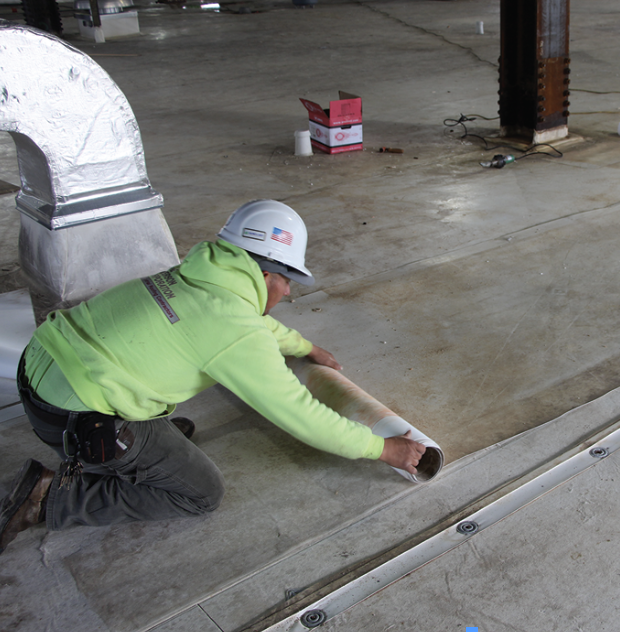
Making Recycling Sustainable
A sustainable recycling strategy requires high quality reclamation in the tear-down, reprocessing efficiency and a ready customer base for the recycled product. The following issues illustrate the scope of elements that are brought to bear in achieving that sustainable strategy.
Reclamation: Any long-term approach to reclaiming old roofs will need to address the training of roofing contractors in the logistics of tearing down the roof system for recycling instead of landfill disposal. Slightly more handling is involved, as the contractor must separate the membrane from other waste materials and prepare it for shipping off the site. Steps include:
• Preparing and storing the membrane for transport to the recycler – Although a variety of means are possible, the most effective appears to be for old membranes to be cut into strips of prescribed widths and lengths and tightly rolled and tack welded before leaving the job site for the recycler. As part of the planning process, roofing contractors will need to pre-order gaylord boxes and pallets based on the surface area of the roof, the membrane thickness and the existing assembly construction. Scrap membrane and trimmings from the new installation can be added to the gaylord for recycling as well.
• Delivering a ‘clean’ product to the company providing size reduction and grinding services – For best results, the processor needs to receive a membrane free of foreign materials like stone ballast, metal fasteners and other construction debris.
Processing: Many processors can grind reclaimed materials, but for vinyl roofs to be in a form suitable for processing, equipment that can separate such components as felt backing material and the reinforcing polyester matrix is needed.
• Finding a recycler that can process reinforced material – Until recently, felt-backed membranes could not be reprocessed and had to be landfilled. Newer equipment can separate the felt, allowing the sheet to be recycled with ease. This equipment can also extract the encapsulated scrim reinforcement from the polymer matrix. The felt backing and scrim can be used as fibrous filler, concrete expansion joints or other applications, and waste-to-energy.
Identifying the market: The success of roof recycling, as is the case with all recycling, is dependent on the will of the participants in the process.
• Developing a customer base and collection infrastructure – The North American vinyl roofing manufacturers are committed to and have been developing the infrastructure to establish a viable program for a decade. With a strong desire for sustainable construction in the marketplace and efforts to divert construction waste from landfills, it appears that the time is right for the growth in roof recycling to accelerate.
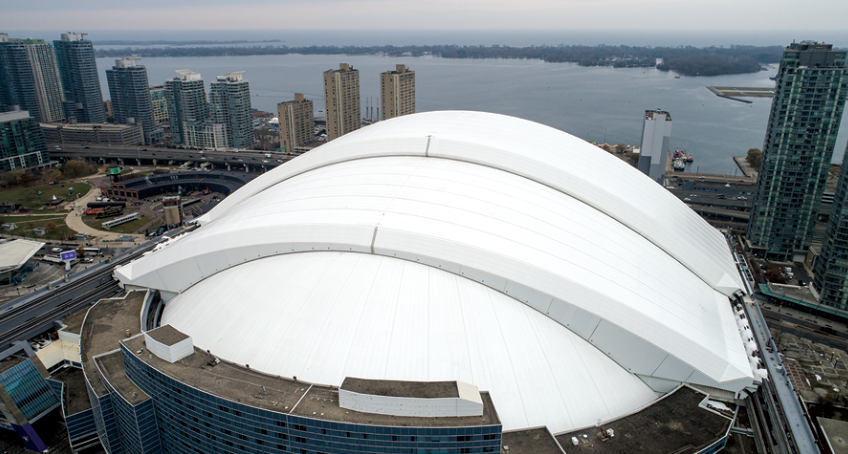
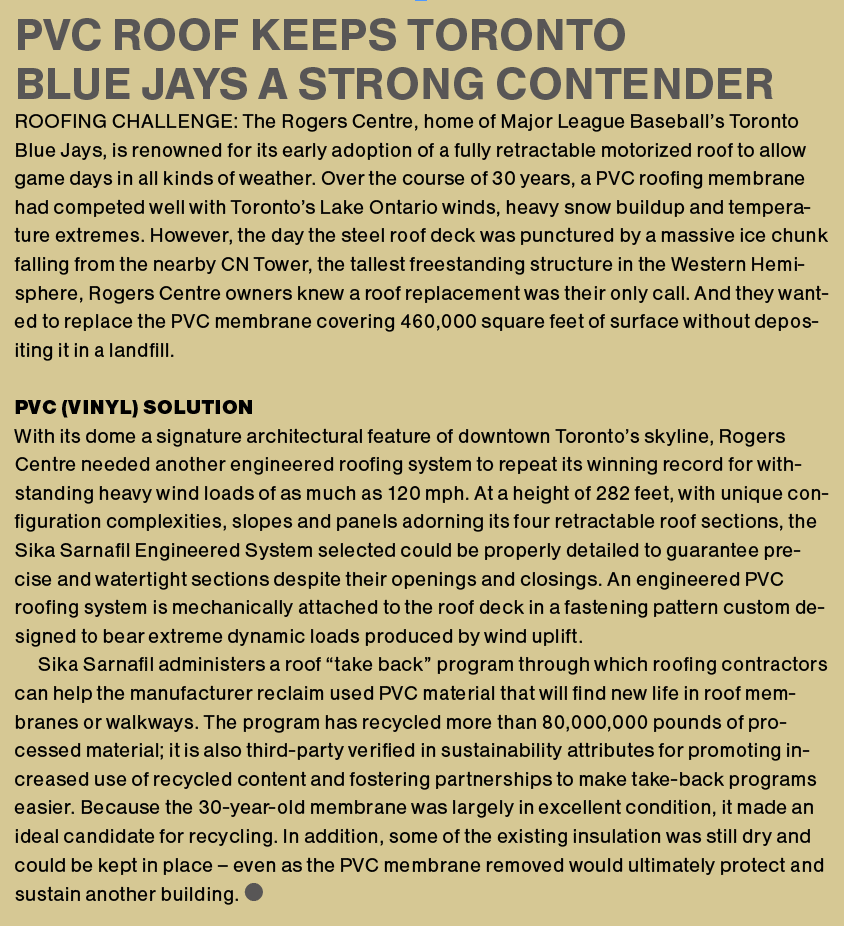
Keeping It Green
Alongside these challenges, the architectural and design communities justifiably continue to push all stakeholders to raise the bar on what can be achieved. Both the U.S. Green Building Council and the Green Building Initiative recognize roof recyclability as an important element in sustainability; each promotes recycling and the use of recycled roofing materials through the LEED and Green Globes voluntary initiatives.
Recycling is also a key element in ANSI/NSF 347, the Sustainability Assessment for Single Ply Roofing Membranes, which incentivizes manufacturers to recycle roofing materials that have been removed from existing buildings. As the first third-party consensus standard for evaluating and certifying the sustainable attributes of single-ply roofing membranes over their entire life cycle, NSF 347 is an important tool to help architects and specifiers make educated decisions about product selection.
Finally, recycling considerations are also embedded in Environmental Product Declarations conducted in accordance with ISO 14025 and validated by an independent third party, as well as cradle-to-gate or cradle-to-grave ISO 14044-conformant life cycle assessments. Both of these stringent reporting requirements provide third-party verified documentation which can be used to reinforce any position on sustainability.
Not a challenge, however, is keeping the firm commitment to evolving post-consumer recycling initiatives by the Vinyl Roofing Division of the CFFA in an effort to do all it can to limit the environmental burden posed by construction materials.
i NSF/ANSI 347-2012 Sustainability Assessment for Single Ply Roofing Membranes
ii Construction and Demolition Debris Generation in the United States, 2014, U.S. Environmental Protection Agency, Office of Resource Conservation and Recovery, December 2016
iii Progress Report 2016, VinylPlus®, the voluntary sustainable development program of the European PVC industry.

